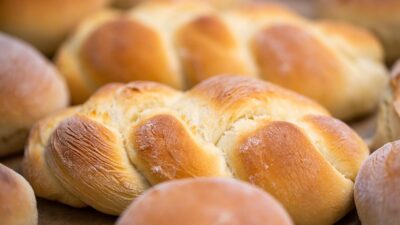In recent years, the culinary landscape has evolved dramatically with the rise of digital content, and one of the most transformative trends has been the surge in recipe videos. These short, engaging clips have become a staple for food enthusiasts worldwide, revolutionizing not just how we learn to cook, but also how we approach food culture and community.
The Genesis of Recipe Videos
The concept of instructional cooking videos isn’t entirely new; television cooking shows have entertained and educated audiences for decades. However, with the advent of platforms like YouTube, Instagram, and TikTok, the format has been democratized. Home cooks can now share their culinary adventures in a matter of minutes, reaching global audiences who crave quick, visual guides rather than lengthy text-based recipes.
The simplicity of recipe videos is in their format. They offer a visually rich experience, allowing viewers to see each step in real-time. This is particularly advantageous for novice cooks who may struggle with understanding written instructions. The combination of music, engaging visuals, and concise commentary creates an appealing and enjoyable learning environment.
Changing Cooking Habits
As lives get busier, the convenience of recipe videos has altered how we approach cooking. Many people now prefer to watch a quick 30-second clip over reading a lengthy blog post. With just a swipe or a click, home cooks can find thousands of recipes, ranging from simple weeknight dinners to elaborate desserts.
Platforms like TikTok have taken this trend to the next level. "Cooking hacks" and "meal prep" videos have proliferated, often featuring innovative techniques and shortcuts. The algorithmic nature of these platforms means that viewers are constantly exposed to fresh content, inspiring them to try new cuisines and techniques they might not have considered otherwise.
Community and Engagement
Recipe videos are more than just educational tools; they foster a sense of community. Many users not only watch but engage by leaving comments, sharing their attempts, and collaborating with creators. The comments section often becomes a space where viewers exchange tips, adaptations, and personal anecdotes, transforming a solitary act into a communal experience.
Social media platforms also facilitate a culture of sharing. The popular hashtags like #RecipeOfTheDay or #FoodTok allow users to curate themed content, encouraging others to join in the culinary journey. This phenomenon has birthed online challenges and trends, such as "Dalgona Coffee" or “Pasta TikTok,” where millions join in to recreate viral recipes, spreading the joy of cooking.
The Professional Shift
Professional chefs and culinary schools have also embraced this trend. Many have taken to social media to showcase their skills, attract new students, and promote their restaurants. High-quality production values, combined with the accessibility of recipe videos, have allowed these professionals to connect with a wider audience than ever before.
Furthermore, influencer culture plays a significant role. Food influencers leverage their platforms to promote not only recipes but also sustainable eating, local ingredients, and healthy cooking. This shift towards conscious eating and ingredient awareness is resonating with a more informed consumer base that seeks connection to their food sources.
Challenges and Considerations
Despite the overwhelming popularity of recipe videos, there are challenges. The pressure to create visually stunning content can sometimes overshadow the importance of culinary techniques, leading to recipes that may not be practical for the average home cook. Additionally, the rapid pace of these videos can make it difficult for viewers to grasp subtle yet crucial cooking techniques.
Moreover, the reliance on digital content raises questions about accessibility. Not everyone has equal access to high-speed internet or the latest gadgets, which can limit participation in this visually driven culinary movement.
Conclusion
The rise of recipe videos has undeniably transformed the culinary world, making cooking more accessible and engaging than ever. By combining entertainment and education, these bite-sized clips have encouraged a generation to step into the kitchen, experiment with new flavors, and share their culinary experiences.
As we look to the future, it is likely that the recipe video trend will continue to evolve, shaping not only how we cook but also how we connect over food. Whether you’re a seasoned chef or a curious beginner, there’s a wealth of knowledge waiting at your fingertips—just a click away.



